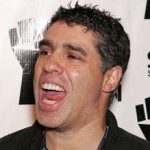February NPD – Better Than Expected
The NPD data for February 2008 has been released. The NPD Group is the leading global provider of consumer and retail market research information for a wide range of industries. They provide critical consumer behavior and point-of-sale (POS) information and industry expertise across more industries than any other market research company.
The data for February has mixed results. NPD tracked retail sales were still slightly down on a year over year basis, but month over month data is positive, and tracking better than in previous years. By example, in previous years the bump in sales from January to February has typically been very modest. This year the bump is 54%. The significance of this bump on a month over month basis can not yet be measured in terms of a trend, but indications are that the sector could well be seeing the end of poor year over year comparisons in exchange for comparisons that are flattening out.
The February results are better than most analysts expected, and if the trend indeed flattens out, it will give a measure of predictability to the retail channel, a situation that has not existed in over a year. many analysts had anticipated the first quarter having sales down in the 30% to 35% range. Sirius has had a larger NPD share for 30 consecutive months.
Given the most recent data, it would appear that retail is performing better than most anticipated, and perhaps we have seen an end to significant year over year declines.
NPD MARKET SHARE FEB 08
Sirius – 67%
XMSR – 33%
YEAR TO DATE NPD MARKET SHARE 08
Sirius – 67%
XMSR – 33%
YEAR OVER YEAR COMPARISON (FEB 08 vs. FEB 07)
Sirius – Down 16%
XMSR – Down 19%
Sector – Down 17%
MONTH OVER MONTH COMPARISON (FEB 08 vs. JAN 08)
Sirius – Up 59%
XMSR – Up 44%
Sector – Up 54%
Position – Long Sirius, Long XM





It is interesting, when given a choice which company people are picking in over whelmming numbers
These results that consistently are the same for a long period of time is the reason I want a decision on the merger quickly . I am very concerned that we Sirius investors are WAY overpaying for XM ! We need to end this now one way or another . If they don’t approve the merger then we drown XM in the bathtub and deal with whoever buys their remains !
Approved or disapproved Sirius shares we see a substantial bump buy being unlocked from this 4.6 to 1 ratio !
John and Eduardo, please keep in mind that the 67% to 33% is not the actual split of retail activations for Sirius and XM. This is merely a sampling of outlets that are surveyed by NPD.
If you want to view the split of what people are choosing at retail and becoming subscribers, you need to compare retail activations. Sales of a receivers do not equate activations. The ultimate measurement of what subscribers are choosing is down with activations.
The retail activation split for the previous 5 quarters has varied between 52%-55% for Sirius and 45%-48% for XM. The split of “which company” subscribers are choosing is much closer than you think; and certainly not “overwhelming”.
I’m not going to get into the whole debate over NPD’s reliability and how many of XM’s retailers are represented by NPD — I’ll leave that up to XM and other posters. But I will just point out the only market share comparison that matters when considering of what subscribers are “choosing” — and that is actual retail activations… that is the only split that matters, because that is where the revenue comes from… not in sales at NPD monitored outlets.
Do not get lulled in to the belief that 67% at NPD means that Sirius is bringing in 67% of all subscribers that have a choice… that would be a significant error.
–
homer, so let me get this right, are you saying that people are buying radios but not activating them. If that is so why buy a satilite radio. Or are you saying that because XMSR has a bigger internet campaign going, they sell more radios then SIRI that way.
Just remember this, SIRI has gotten more subcribers then XMSR in the last 9 quarters. SIRI is also out pacing XMSR in Canada with almost 80% of the people having chosen SIRI.
I would also like to say homer, I would have a little more confidence in XM if they could have at least pulled one or two of the last 9 quarters away from SIRI.
>>>Or are you saying that because XMSR has a bigger internet campaign going, they sell more radios then SIRI that way.
~~~~~~~~~
John, here is a statement from XM made on their last Conference Call about NPD:
“And just as XM called the early trend that retail was starting to decline, we’re letting you know now that the NPD data is less relevant today than it was five to three years ago. We no longer use NPD as a lead indicator in the after-market. We estimate that when we launched our service, satellite radio business in 2001 and 2002, NPD measured over 70% of XM’s retail sales. In 2007, we estimate that NPD represents less than 40% of XM Satellite Radio’s retail sales. Roughly 60% of our sales come from direct or non-NPD reporting channels.
XM has consciously worked to grow these more cost-effective means of retail distribution, which is one of the important reasons why our retail SAC charges are well-managed and why our quarterly retail gross adds are consistently higher than NPD reporting outlets would suggest.”
Looking at the actual new subscriber numbers (where the revenue comes from)… Sirius had 4,183,901 GROSS additions and 2,297,230 NET additions. The NET additions for Sirius were split with 1,706,623 coming from the OEM side and 598,883 coming at RETAIL.
While Sirius doesn’t break down the GROSS addition split between OEM and RETAIL, based on previously known information, it is estimated that Sirius added between 2.6~2.8 million GROSS OEM subs in 2007; and between 1.3~1.5 million GROSS RETAIL subs in 2007.
For XM, they had 3,891,000 GROSS additions and 1,398,000 NET additions. The NET additions for XM were split 1,213,000 at OEM and 185,000 at Retail.
Meanwhile XM does break down their GROSS figures… 2,622,000 coming from OEM and 1,269,000 coming from retail.
Comparing the Retail GROSS additions of the two — because GROSS Retail additions best represent the “choice” that you are trying to establish — Sirius added 1.3~1.5 million GROSS; while XM added 1.2 million GROSS.
That puts the GROSS addition market share for Sirius between 52~55%.
My point to you is that — THAT is not an overwhelming figure. Sirius only out-“activated” XM by 100K to 300K for all of 2007, in the retail market. NPD has its purposes — but one of them is NOT to measure the popularity of who new subscribers are chosing, when given the choice.
—
NPD is a very accurate measure of the sales trends at the stores they cover.
Direct sales not covered by NPD will differ.
Depending on the programs being run by either company, direct sales will be a big component as well.
Sirius hardware tends to be priced higher than XM, and their direct marketing efforts are typically not as agressive.
One major factor for direct sales comes through marketing efforts to existing OEM subscribers for additional family plan receivers.
XM has a more “established” OEM channel subscribers. Their family plan makes up 23% to 24% of the base. By contrast Sirius is at about 13%. As Sirius’ OEM channel becomes more “established”, we will likely see an increase in the family plan subscribers, which in turn will bring in more direct sales.
homer thanks for your clearification. I would disagree with your 2.6-2.8 and 1.3-1.5 those add up to 4.1 million not the almost 4.2 million there are. Most would say 4,183,901 is closer to 4.2 then 4.1 (sorry to be nit-picky). I will also say that SIRI was able to get and keep over 400,000 more of the retail then XMSR. Even though XMSR has more sub at retail then SIRI churn does not cover the 400,000 difference. How would you account for this, please specify.
P.S. did you see Micheal H is posting in the forums here now.
homer and John….
Here is what NPD has captured in 2006 and 2007 for XM. It is in the XM Stock talk forum, which is available to members.
https://siriusbuzz.com/forum/showthread.php?t=349
In their conference call XM indicated that NPD data has become less relevant and that the NPD Group only picked up about 40% of XM’s sales at this point.
In terms of predicting the overall sales, the NPD number is becoming a smaller share of the pie, but the relevance is still of value. NPD’s numbers are based on actual sales of devices at participating retailers.
XM’s statement that NPD is picking up about 40% is understating the actual results slightly on a full year basis, and way off the mark for the Q4 of 2007.
HERE ARE THE PERCENTAGES NPD PICKED UP IN 2007
Q1 2007 – NPD picked up 39% of the Gross retail number
Q2 2007 – NPD picked up 46% of the Gross retail number
Q3 2007 – NPD picked up 38% of the Gross retail number
Q4 2007 – NPD picked up 62% of the Gross retail number
FY 2007 – NPD picked up 47% of the Gross retail number
HERE ARE THE PERCENTAGES NPD PICKED UP IN 2006
Q1 2006 – XM did not report Gross retail subscriber data
Q2 2006 – NPD picked up 49% of the Gross retail number
Q3 2006 – NPD picked up 46% of the Gross retail number
Q4 2006 – NPD picked up 67% of the Gross retail number
FY 2006 – NPD picked up 50% of the Gross retail number
The difference between 2006 and 2007 on a full year basis is 3 percentage points (47% vs. 50%).
There are quarters where NPD is picking up only 40% of the gross retail number. NPD is picking up less this year than last. Sales directly by XM, as well as direct sale campaigns have increased. NPD is relevant in that it gives an indication of the behavior of a consumer who walks into Best Buy.
Another factor is that neither Sirius nor XM have come out with a new “gotta-have-it” retail product lately. When a product gets hot, consumers are more apt to buy at typical retailers.
Is there a shift? Yes. Should investors assume that NPD only picked up 40% of Q4? No, the data states otherwise. Should investors use 40% for Q1 of 2008? Perhaps. Realistically, I would assume 45% in Q1, Q2, and Q3 and over 60% in Q4.
Hope this helps
NPD ceased to be meaningful some time ago. Homer has obviously zeroed in on this fact.
I think calling NPD meaningless is a bit short sighted.
Knowing how to use and apply the data is very meaningful.
Knowing the sales levels and trends at big box stores is very meaningful.
Having a gauge of retail subscriber activity three times during a quarter as opposed to what gets reported a month after the quarter ends is very meaningful.
Having the ability to measure direct sales in relation to overall retail is very meaningful.
In Q4 NPD accounted for over 60% of XM’s retail subscriber number. I would not term that as meaningless.
The data needs to be used correctly, and with the proper perspective.
Over the last 2 years NPD has picked up about half of the retail sales for XM. I would not call that meaningless
>>>Knowing the sales levels and trends at big box stores is very meaningful.
There was a time when there was some value in it. But today, retail is just so unimportant for the future of sat radio that nobody cares. The NPD data, in particular, is just fodder for confusing the Sirius believers even further.
They are confused about OEM because of the bogus subscriber counting used by Sirius; and they are confused about retail by NPD. The end result is you have people — some of whom post here — who don’t have the slightest idea what is going on with these two businesses.
No matter how many times Homer comes here and posts sheer factual information about market share, you still have Siriots talking about how Sirius has this huge market share advantage, which has no basis in fact. When combined with the massive, $3/4 billion expenditure for Stern, which has turned out to be a total disaster for Sirius, the picture is just dismal. And it is dismal for XM, as well — just not quite as dismal, unless the merger goes through.
Things are all relative….
at the end of the day, the “retail number as reported” could be called into question in terms of value. It depends on what these companies get for the radios they “sell” themselves.
Giving away a radio is counted in the retail channel.
confusion in oem….
What matters is installations and the return of cash on those installations. I do not care how they are counted as long as they can bring value or keep cash flow happening. I would rather see an initial return of my investment faster than not.
Penetration rates matter, not production rates.
Retail will play a role for some time to come. It also plays an important role. many family plan subscribers come through promotions generated from an initial OEM receiver.
XM has marketed this way for quite some time. It is one reason why their direct sales are what they are. Almost 25% of XM’s subscribers are in the family plan. Many of those family plan subs are retail units bought directly from XM. I would not call that insignificant.
The only reason FrontMed and XMSR try to make the NPD less of an issue is XMSR is failing miserably in it. Hears a fact for you (FrontMed, Hippocritical ass or what ever you call your self these days, sad and pitiful) SIRI net retail adds were 598,883, XMSR’s were 185,000. 1.75 monthly churn on the roughly 1 million more subcribers XMSR has will not make up the difference. SIRI is beating them by a 3 to 2 ratio even with additional churn figured in (given 210,000 sub to make up for XMSR additional churn). So you can say that NPD is not meaningful all you want, the fact is what ever way XMSR is getting their retail subcribers from, is not working as well as what SIRI is doing.
You should be thankful to Stern, he not only gave SIRI well over 2 million subcribers, (giving SIRI an additional 265 million a year in revenue well over enough to cover his 145 million a year cost). He also gave the whole satilite radio industry new life, Including XMSR. You also have no clue as to all the free advertisement he gave satilite radio, even before he came to SIRI. For starters though why dont you go back through XMSR earnings call they said it cost them a bundle to try and make up for the Stern effect.
As a side note in Canada in which both started about the same time SIRI has 80% of the retail market and 70% of the total market. So dipshit what is XMSR excuse there.
Tyler, thanks for your input, it did.
>>> What matters is installations and the return of cash on those installations. I do not care how they are counted as long as they can bring value or keep cash flow happening.
It makes a big difference when you are trying to compare results between the companies. There are idiots out there who perceive SIRI’s growth to be much faster than XM’s, when that simply isn’t a factual perception.
It is undeniable that Sirius (the company) has benefited from its bogus counting methods. But it has been at the expense of shareholders who are largely clueless about the subject.
Unfortunately, it is likely if the merger occurs, that Mel will have BOTH COMPANIES misrepresenting the numbers the way Sirius does now.
What investors see is SIRI coming in and at first just getting a vary vary small fraction of the subcribers XMSR was getting. Then Stern and Mel were hired (OEM’s were not a real factor at that time) and SIRI beating XMSR in net subcribers. That was not what had investors jumping ship from XMSR though, it was the fact that XMSR from that point on could not retake the lead. You also had in the beginning, investors believing FrontMed’s buddy Jonathon Jacoby giving erroneous price targets (On excuses like, because XMSR had so many more subs that churn was a big factor and the reason why SIRI was getting more net subs.) while XMSR was falling like a rock, what most investors didn’t know was that while he was pumbing XMSR, his company Bank of America was selling it. It was 9 straight quarters that SIRI beat XMSR in net subs that brought XMSR stock price down (plus their growth slowed to a trickle of what people thought it should have been).
FrontMed is delusional, he thinks he knows more then everyone invested in Sirius. Yet I will contend there are alot of people that are way more knowledgeable then him. They also have a bigger percentage of their investment in SIRI, then in XMSR. He has to think this way because he has basically stated, that SIRI is a terrible investment and XMSR is the better of the two. FrontMed should see if George Soros would like his advice. FrontMed is so delusional he cant comprehend why homer985 comments are more respected then his. I will tell you FrontMed; it is because he doesn’t sound like a nut who has a major inferiority complex.
>>> FrontMed is delusional, he thinks he knows more then everyone invested in Sirius.
Yes, I think anyone who owns shares in Sirius today is a damned fool; for years now, it has been my opinion that true investors would not take a position in Sirius — only under-informed speculators would do so. But frankly, I wouldn’t have a significant investment in XM today, either.
That said, if the merger fails, XM has a reasonable chance of pulling it out. Sirius will have a very difficult time competing, IMO, due to their technology and OEM disadvantages. A month ago, I would also have referred to SIRI’s content disadvantage, but with the exit of Lee Abrams and the possibility the merger will succeed, it is entirely likely that XM’s content will be as bad as SIRI’s in the not-too-distant future.
There is no doubt that XM’s management blew it badly — it is made worse by the fact that they had performed superbly to begin with. Today, Karmazin is outperforming XM’s management by a mile. But you cannot get around the fact that the situation Karmazin inherited was bad to begin with, and there is only so much he can do with such a bad situation. Karmazin has done all the cost-cutting he can do, sales are drying up, Stern’s contract and satellite replacements are looming, and you can only get so much mileage out of phony subscriber #s.
IMO, one has to be pretty stupid to be holding shares in SIRI at this point in time.
First of all to invest in the satilite radio industry at ANY time (that includes from the start), you would be investing on a speculative basis.
Thats Funny, so like I have said you think you are more intelligent then George Soros and other financial institutions and all the people working for them. George Soros just entered in a few months ago keeping the bigger percentage of his investment in SIRI not XMSR. You prove my point about you being delusional.
It also is amazing to me that Stern’s contract is not even half over and you can say it is coming up. Not to mention, so even if it was up tomarrow what changes, he gets another 10 million a year. SIRI does not give the total amount of Stern’s contract up front, so instead of 145 million its 155 million a year.
Finally I am not going to get into it about what you call phony subcriber #s. That was already argued on another article, inwhich I feel you were wrong.